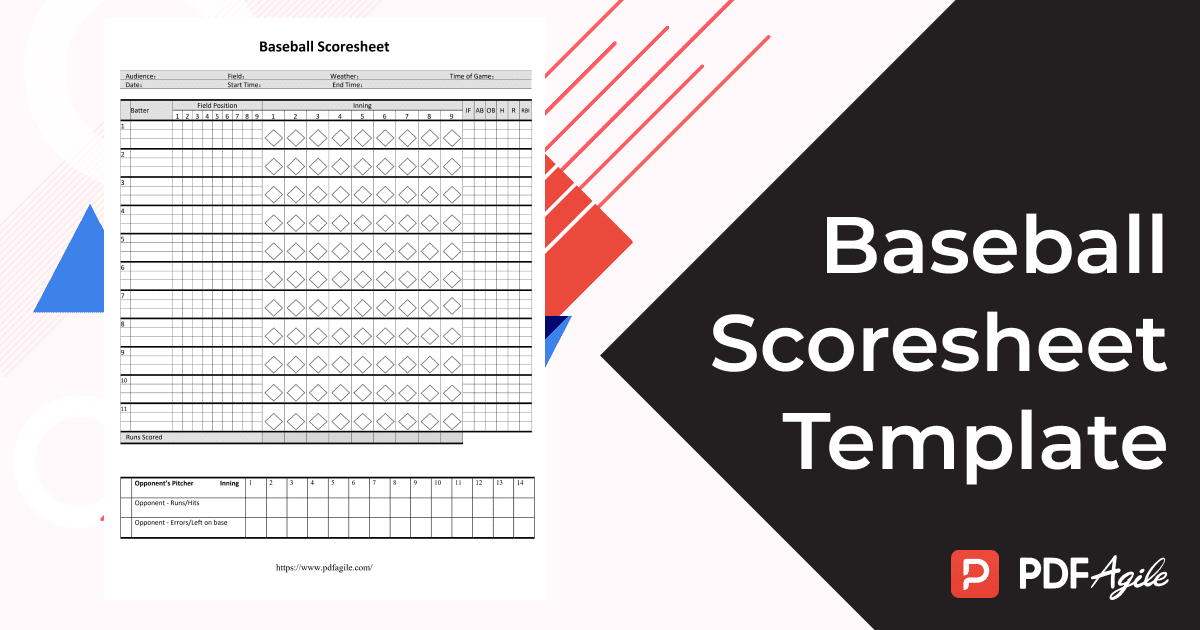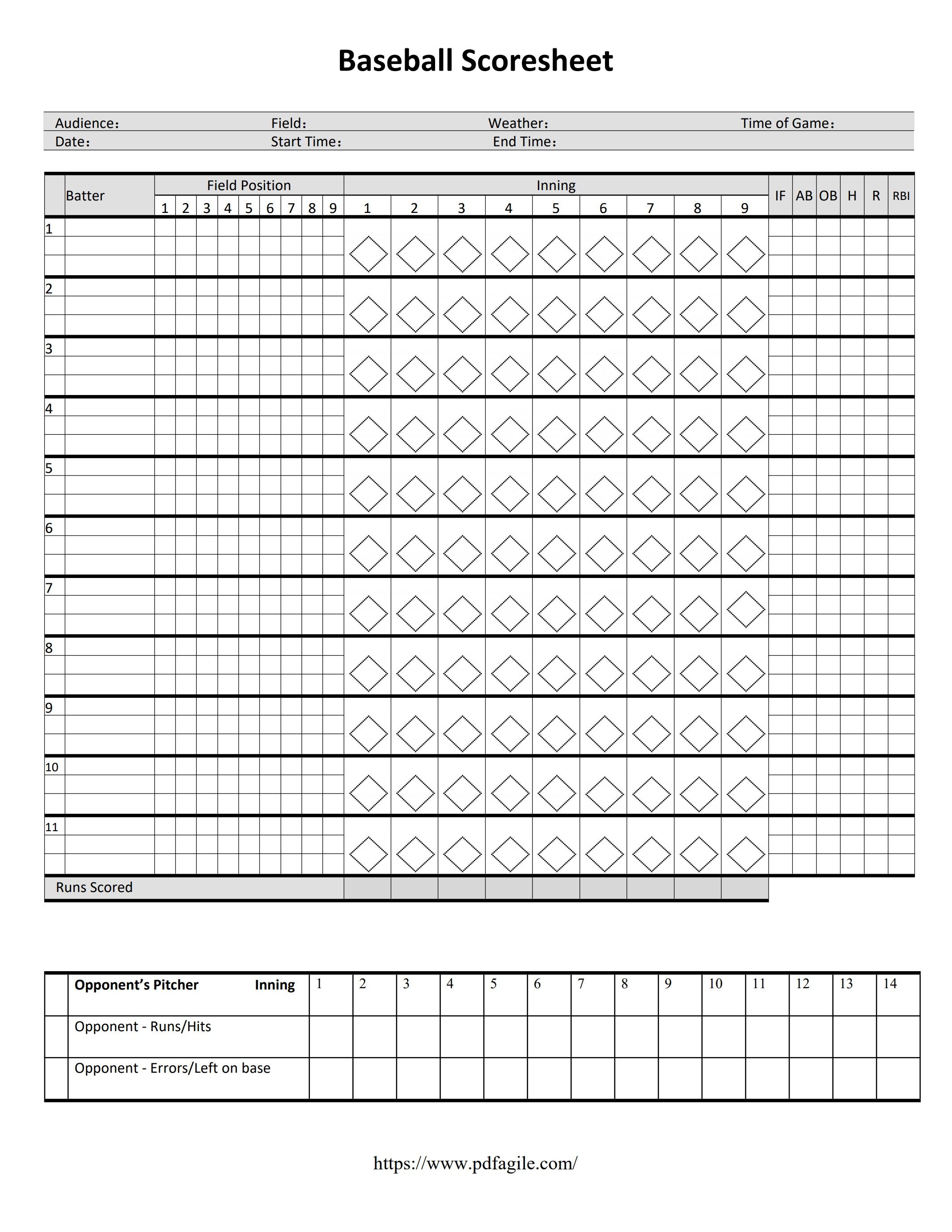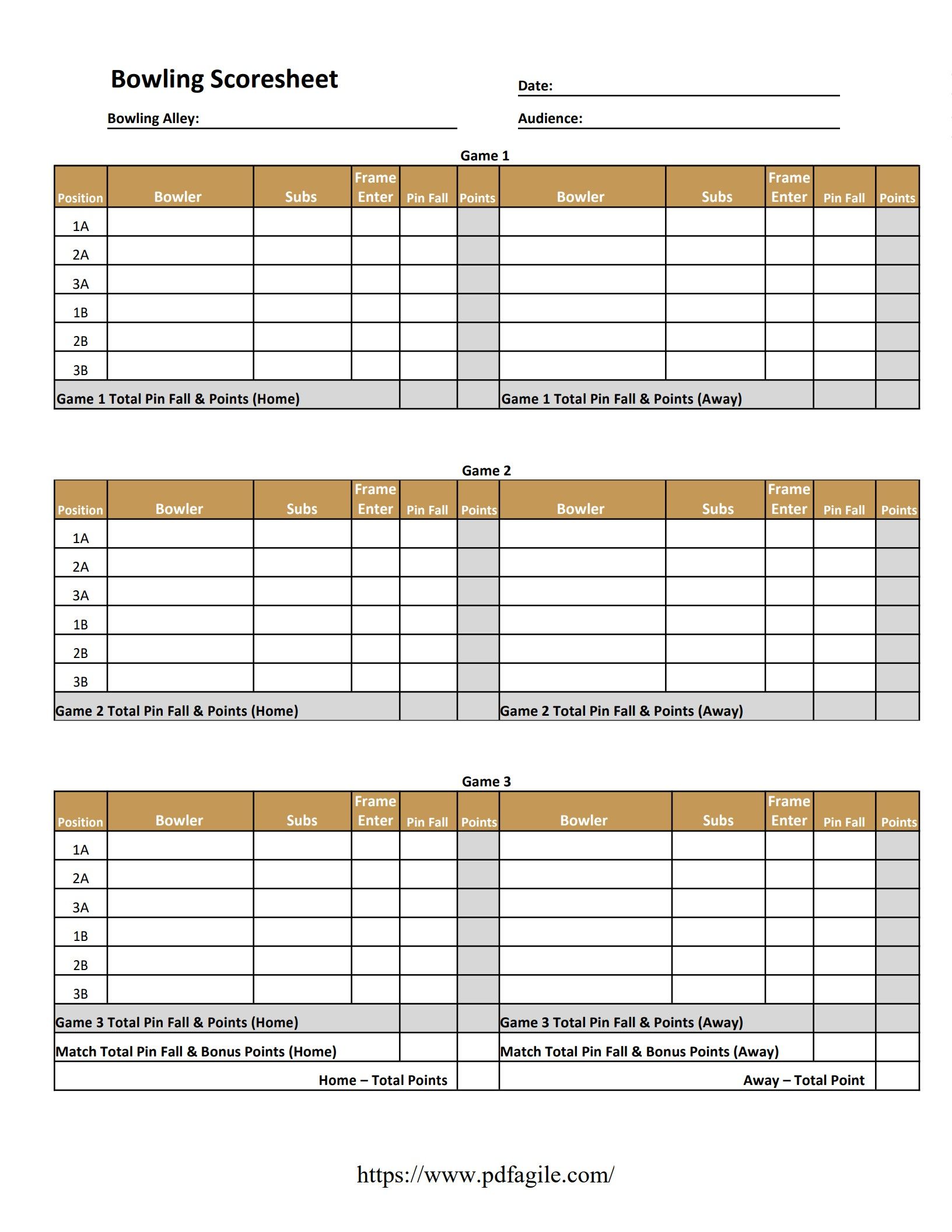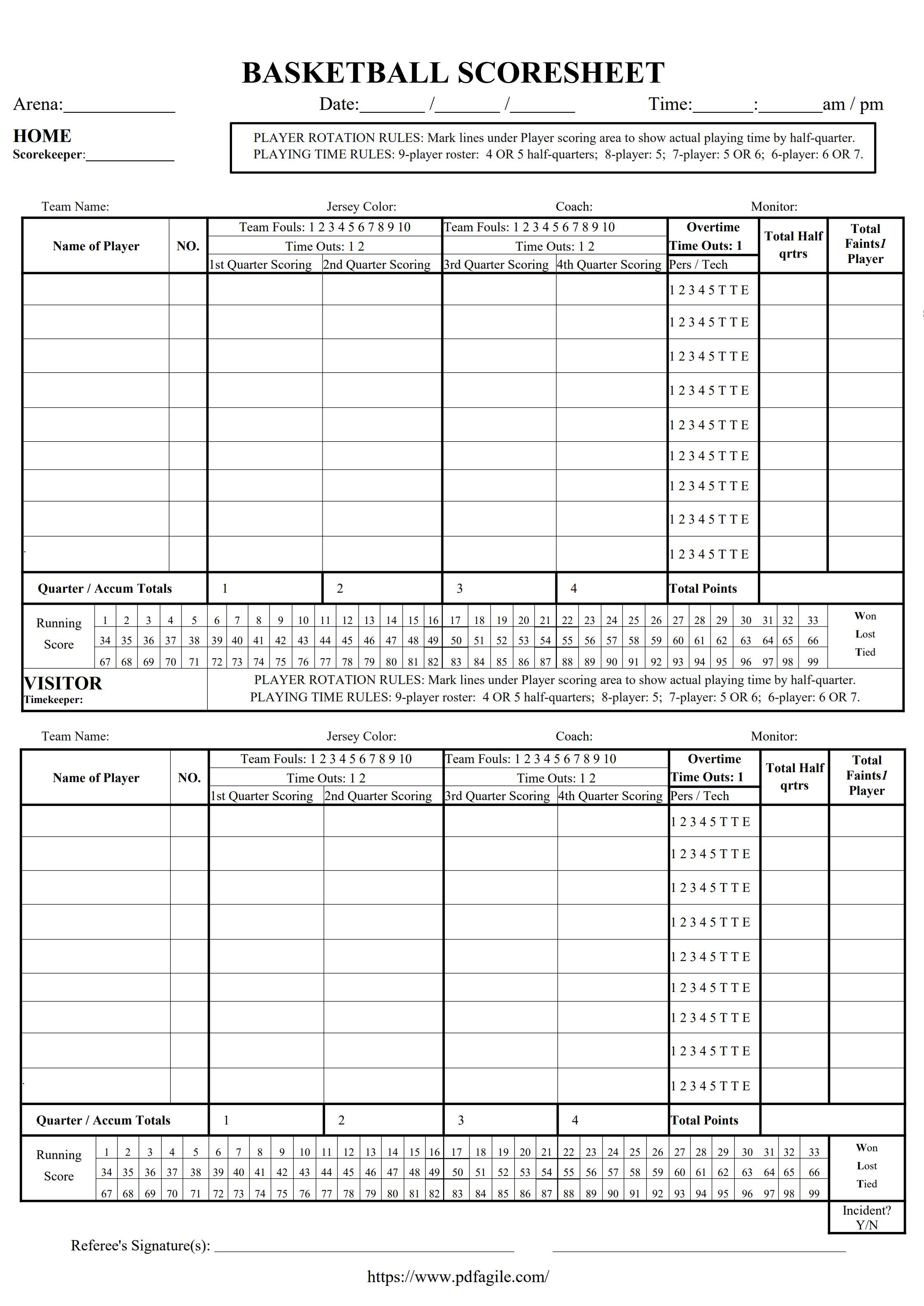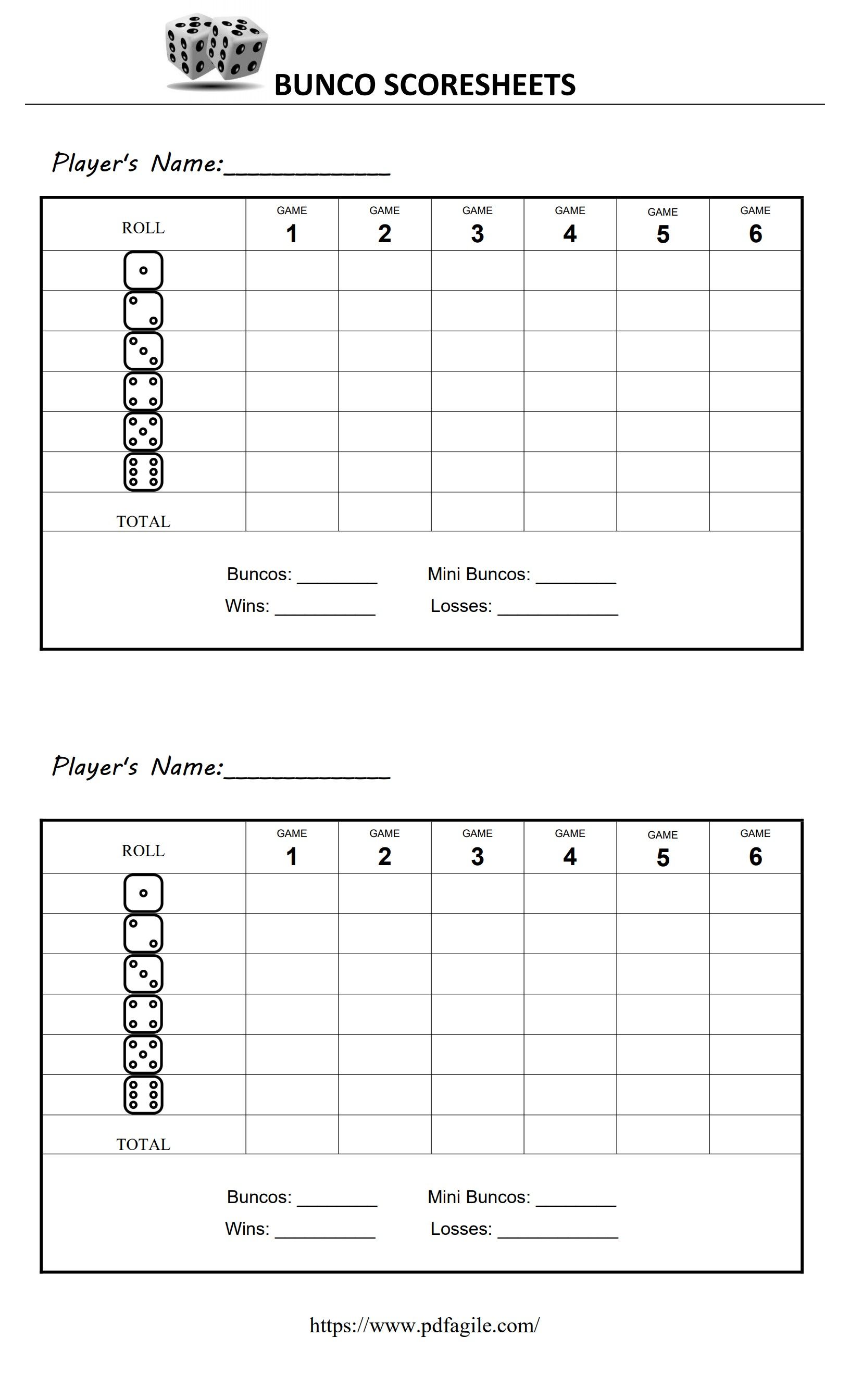The crack of the bat, the roar of the crowd, the tension of a close play at the plate - baseball is a whirlwind of action and excitement. But amidst the chaos, a silent language unfolds, meticulously recording the game's narrative. This language resides on the baseball score sheet, a seemingly simple document that holds the key to unlocking a deeper understanding of the game.
Imagine yourself in the stands, captivated by a heart-stopping ninth inning. The bases are loaded, two outs, and the batter swings. A tense silence hangs in the air. Did he connect? Did it make it over the fence? A glance at the score sheet provides the answer, confirming a game-winning home run and sending the stadium into a frenzy.
The score sheet is more than just a tally of runs and outs. It's a conductor's baton, orchestrating the flow of the game and revealing the strategic brilliance of coaches, the clutch performances of players, and the dramatic ebb and flow of a well-played contest. So, whether you're a seasoned fan or a curious newcomer, this guide will equip you to decipher the score sheet, transforming you from a passive observer into an informed baseball enthusiast.
What is a Baseball Scoresheet?
Imagine a baseball game unfolding in a whirlwind of pitches, throws, and stolen bases. How do you keep track of the exciting chaos? Enter the baseball score sheet, your trusty companion for deciphering the game's intricate dance.
In essence, a baseball score sheet is a battlefield map. It visually captures the flow of the game, documenting the crucial events that determine the victor. It keeps track of the following:
- Runs Scored: This is the ultimate currency of baseball. The score sheet meticulously records how many runs each team crosses home plate, providing a clear picture of the game's progress.
- Hits: Not all bat contacts result in runs, but a well-struck ball deserves recognition. The score sheet tallies hits, highlighting players who make solid contact and advance runners on base.
- Outs: Every team needs to get three outs to retire the opposing side. The score sheet tracks these outs, indicating how effectively each team is putting away batters.
- Errors: Even the best players make mistakes. The score sheet reflects fielding errors, which can swing the momentum of a game by giving unearned baserunners to the opposition.
Think of it as a symphony conductor's score. While the players on the field are the musicians, the score sheet serves as the conductor's guide, capturing the rhythm and intricacies of the game for both the scorekeeper and anyone following along. The score sheet goes beyond just the basic tallies, with some sheets offering additional sections for:
- Individual Player Statistics: Dive deeper into player performance by tracking statistics like batting average, strikeouts, and walks for each batter.
- Pitching Details: For the pitching enthusiasts, some score sheets allow you to record pitches thrown, strikeouts earned, and earned runs allowed.
Whether you're a seasoned baseball fan or a curious newcomer, the baseball score sheet unlocks a deeper understanding of the game, transforming you from a passive observer into an informed participant in the drama unfolding on the diamond.
Benefits of Using a Baseball Scoresheet: From Fan to Baseball Savant
Baseball is a fast-paced game with a whirlwind of action. While the crack of the bat and cheers of the crowd are exhilarating, keeping track of everything can feel overwhelming. Here's where a baseball score sheet steps up to the plate, offering a trio of benefits that elevate your baseball experience:
- Become a Baseball Sherlock: Baseball score sheets transform you from a passive observer into an active detective of the game. By meticulously recording runs, hits, outs, and errors, you unlock a deeper understanding of the game's flow. Did that clutch double by the second baseman set the stage for a game-winning run? The score sheet tells the tale, allowing you to appreciate the intricate dance of strategy and execution on the field.
- Sharpen Your Baseball IQ: Scoresheets aren't just about tallies; they're a gateway to a wealth of statistics. As you track batting averages, strikeouts, and walks for individual players, you develop a keen eye for offensive and defensive strengths. This newfound knowledge enhances your viewing experience, allowing you to anticipate plays, decipher pitching strategies, and truly appreciate the nuances of the game.
- Own a Piece of Baseball History: Baseball is steeped in tradition, and score sheets become tangible testaments to that legacy. Imagine filling out a score sheet during a historic comeback or a record-breaking performance. Years later, pulling out that sheet and reliving the game's drama provides a unique and personal connection to baseball's rich tapestry.
Baseball Scoresheet Basic Format
A baseball score sheet might seem intimidating at first glance, but fear not! Here's a breakdown of its typical layout, making you a scorekeeping pro in no time.
Team Showdowns:
- The sheet prominently displays the names (and sometimes logos) of the competing teams at the top. This ensures clear identification throughout the game.
Inning by Inning Breakdown:
- The sheet is divided into sections, typically nine, corresponding to each inning of the game. Each inning section should have designated areas for recording key events:
- Runs (R): Boxes or lines to record the number of runs scored by each team in that specific inning.
- Hits (H): Spaces to track the number of hits each team accumulates in the inning.
- Outs (O): Designated areas to mark the number of outs made against each team during the inning.
- Errors (E): Sections to record any errors committed by either team's fielders in that inning. This can help identify defensive miscues.
Going Beyond the Basics:
- Some score sheets offer additional sections for more detailed tracking:
- Pitching: This section might allow recording the number of pitches thrown by each pitcher, providing insights into pitching strategies.
- Batting: These sections might offer dedicated spaces for tracking individual player statistics like at-bats, strikeouts, walks, and RBIs (Runs Batted In). This level of detail is particularly useful for coaches and analysts.
Keeping it Clear:
Remember, the specific layout and features of a baseball score sheet can vary depending on the level of play (professional, recreational) or the preference of the scorekeeper. However, understanding these basic elements will equip you to navigate and utilize a baseball score sheet effectively, transforming you from a spectator to a scorekeeping champion!
How to Use a Baseball Scoresheet?
Baseball is a fast-paced game, and keeping track of every play can feel overwhelming at first. But fear not, with a basic understanding of a score sheet and these step-by-step instructions, you'll be recording baseball history (or at least your local little league game) like a pro in no time!
Before the Game:
1. Gearing Up: Designate a responsible scorekeeper (ideally someone familiar with baseball). Grab a score sheet (paper or digital app) and familiarize yourself with its layout. Most will have sections for team names, innings, and separate areas for runs, hits, outs, and errors for each team. Some might even have sections for individual player statistics.
2. Team Spirit: Clearly write down the names of both teams in the designated sections of the score sheet. This avoids confusion, especially during close games with passionate fans.
During the Game:
Each Play Matters: Here's where the magic happens! Here's how to track the action on the field:
- The Core Four: For every batter, track four key events: runs scored, hits, outs, and errors. Use designated boxes, lines, or abbreviations (usually K for strikeout, BB for walk) to record them efficiently.
- Runs, Glorious Runs! A run is scored when a runner touches all four bases safely. Whenever a run is scored, mark it down in the designated "Runs" section for the batting team. Update the overall score at the top of the sheet to reflect the current game standing. Be mindful that different hits (home runs, doubles, etc.) can result in multiple runs being scored at once.
- Hitting Spree or Outta Here?: A hit is recorded whenever the batter makes contact with the ball and reaches base safely without an error by the fielding team. There are different types of hits (single, double, triple, home run), but for basic scorekeeping, simply mark a hit in the designated section for the batter.
- Out: You're Out!: An out occurs when three outs are made by the defensive team, ending the offensive team's turn at bat (inning). There are various ways an out can be recorded (strikeout, flyout, groundout), but focus on marking "Out" for each batter until three outs are reached.
Keeping Track of the Game:
- Inning by Inning: After three outs are recorded (or the offensive team scores runs to force the end of the inning), a new inning begins. Draw a line or mark the inning change on the score sheet. Repeat the process of tracking runs, hits, outs, and errors for each new inning.
Optional: Tracking the Players (For the Statistically Inclined):
Some score sheets offer sections for individual player statistics like batting average, strikeouts, or fielding errors. If your sheet provides this option, you can briefly record these details after each batter's at-bat, but prioritize tracking the core game information (runs, hits, outs, errors) first.
Remember: Don't be afraid to ask for clarification! If you're unsure about a call or how to record a specific play, consult with another scorekeeper or refer to the official scorer for guidance. By following these steps and staying focused on the core elements of the game, you'll be well on your way to keeping an accurate and informative baseball score sheet. Now, grab some peanuts, settle in, and enjoy the game – you've got this!
Tips for Using a Baseball Scoresheet: Sharpen Your Scorekeeping Skills!
Baseball's fast pace can make keeping score a challenge. Here are some tips to ensure your score sheet reflects the game accurately and efficiently:
- Embrace Abbreviations: Become familiar with standard baseball abbreviations like "K" for strikeout, "BB" for walk, and "E" for error. Using abbreviations saves space, time, and keeps your score sheet clear and concise.
- Double Play? Double-Check!: After each inning, take a moment to double-check your entries for runs, hits, outs, and errors for both teams. This quick review helps catch mistakes before they snowball into confusion later in the game.
- Know Your Symbols: Some score sheets use symbols to represent specific plays (groundout to shortstop - "6-3", flyout to center field - "8"). Understand these symbols beforehand to avoid confusion and ensure accurate recording of each play. If unsure, consult the score sheet's legend or ask another scorekeeper.
- Communicate Clearly: Baseball has its share of close calls and complex situations. If you're unsure about a play or how to record it (e.g., a close play at first base), don't hesitate to communicate with other scorekeepers or the official scorer. Clear communication helps maintain a consistent and accurate record of the game.
- Pencil Power: While digital scorekeeping apps offer convenience, consider using a pencil for paper score sheets. Pencils allow for easy corrections if mistakes are made during the fast-paced game. There's nothing worse than realizing an error and having to erase frantically!
- Focus on the Fun: Remember, scorekeeping should enhance your enjoyment of the game, not detract from it. Don't get so caught up in keeping track of every detail that you miss the exciting plays on the field! Relax, focus on the key elements (runs, hits, outs, errors), and enjoy the game's atmosphere.
Free Download: Printable Baseball Scoresheet Template
To help you get started, we have created a free, printable baseball scoresheet template. You can download the template by clicking the Use Template button on this page.
You can also explore more scoresheet PDF templates in PDF Agile Templates Center.
